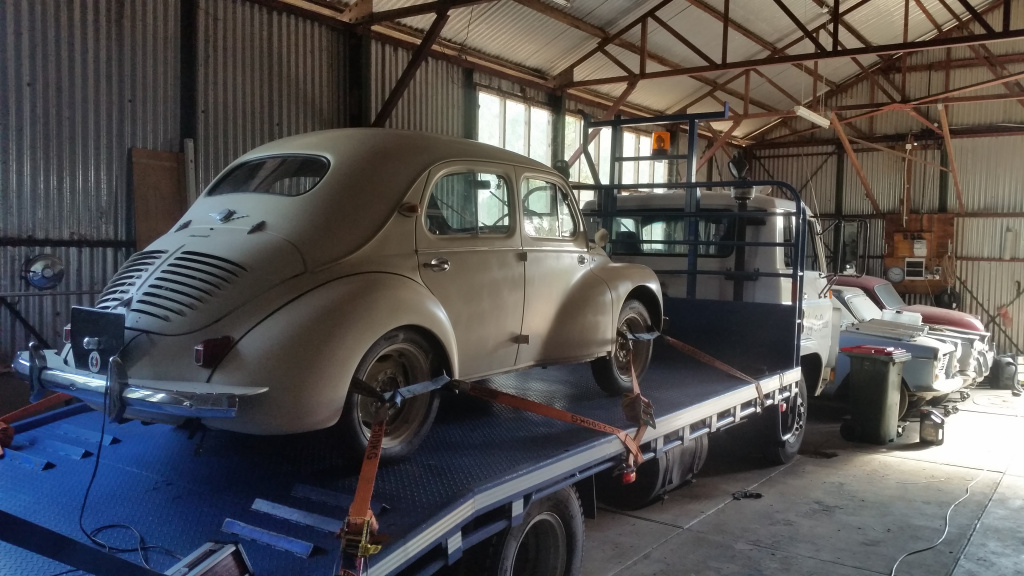1954 Renault 4CV 750

↑ The delightful 1954 model (late 1953 production) 4CV leaves its home for
the last 13 years in Melbourne, Australia, headed for its new home at Kelly
St Classics, 20th March 2022. The car's dedicated owner/restorer for the
past 13 years, and a totally lovely man, can be seen in the background. He was, and
remains, very attached to the car, as it is the same as his very first car
many, many years ago. His love for this little gem was palpable, and he and
his delightful wife know that this car will be
just as well loved in its new home, and that they are welcome to visit it
and its many garagemates at any time.
The following description is from Robin, on the Renault Classic Car Club website.
The need to create a small inexpensive family car was recognized and thus an idea was conceived by Louis Renault in 1938.
Code named 106 E.I. the 4cv prototype was secretly built in Renault's Billancourt factory during the Nazi occupation in 1941. The design was coordinated and engineered jointly by Edmond Serre and Fernand Picard. The body styling was the sole responsibility of Berthaud Roland.
The decision to go ahead and make the prototype was given by Pierre Lefaucheaux, a big gamble when the Germans had bombed the major part of the works and already ordered Renault to concentrate on turning out vehicles for themselves. The first little prototype was rolled out on the 23rd of December 1942 . Road testing started on the 5th of January 1943 at Cote Des Gardes, Meudon behind the Billancourt Troche workshops.
So successful were the car's characteristics and capabilities that a production line was started immediately after the war producing the first pre production prototypes during the summer of 1947. The first 4CV designated R1060 with a 760cc engine came off the line on the 12th of August 1947. The initial public debut was at the Paris motor show in October that year. The factory was under great pressure to get the cars out to the dealers in preparation for the public response to the first showing of the car and 300 were delivered nationwide. Such was the demand that delivery at one stage was two years!
In 1950, 750cc units were substituted to avoid the saloon being continually outclassed in motor sport. The 4CV became the r1062 saloon and R2071 van. Production had already started in the UK at the end of November 1949 at Renault Limited's Acton works the car was launched as the 760 and later the 750 on fitting the 748cc engine. Renault sourced many parts in the UK to help trading relations and to put as much British product into an otherwise all French car. The 750s were assembled from knock down kits imported from France right up until 1961 when production ceased. Other countries also produced the 4cv under license at : Haren Belgium, Sydney Australia, East London South Africa, Dublin Eire and from 1952 F.A.S.A built the 4CV in Valladolid Spain .The Hino diesel company made the car from 1953 in Japan until 1963 although it is believed the continued after this date in small numbers. The 100,000 4cv was built by 1950 the 500,000 by April 1954 and the last came off the line in July 1961 .
A total of 1,105,547 vehicles! Not such a bad gamble. It was thanks to this little car that Renault survived the war years to continue the company's strong reputation of today.

↑ Starting its
journey to Kelly St Classics, aboard the trusty Isuzu FSR.
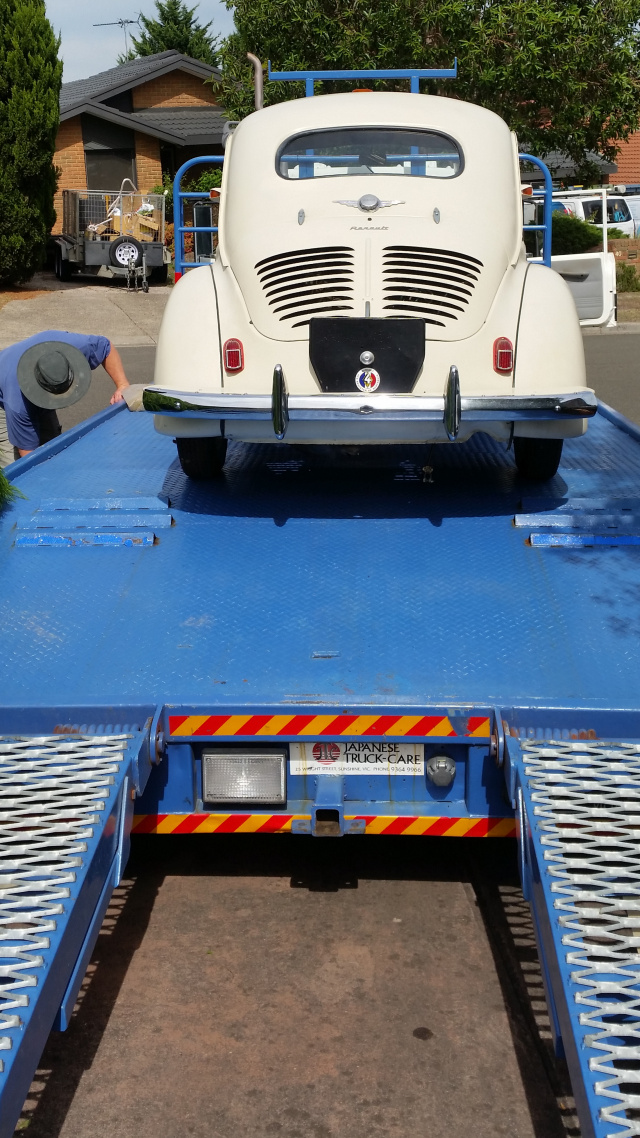
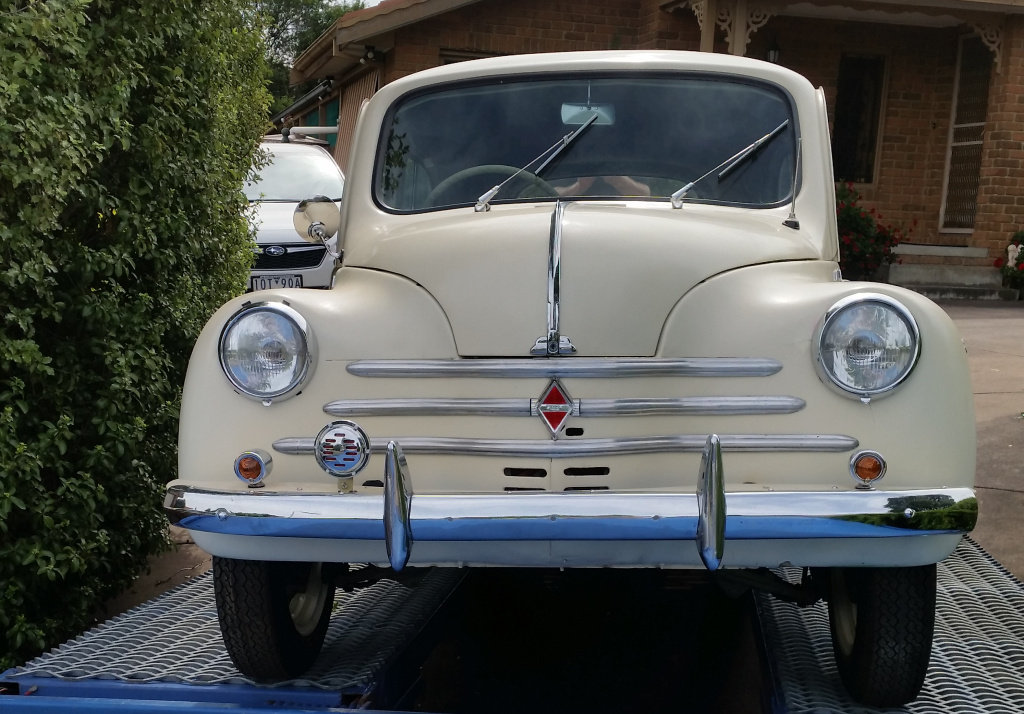
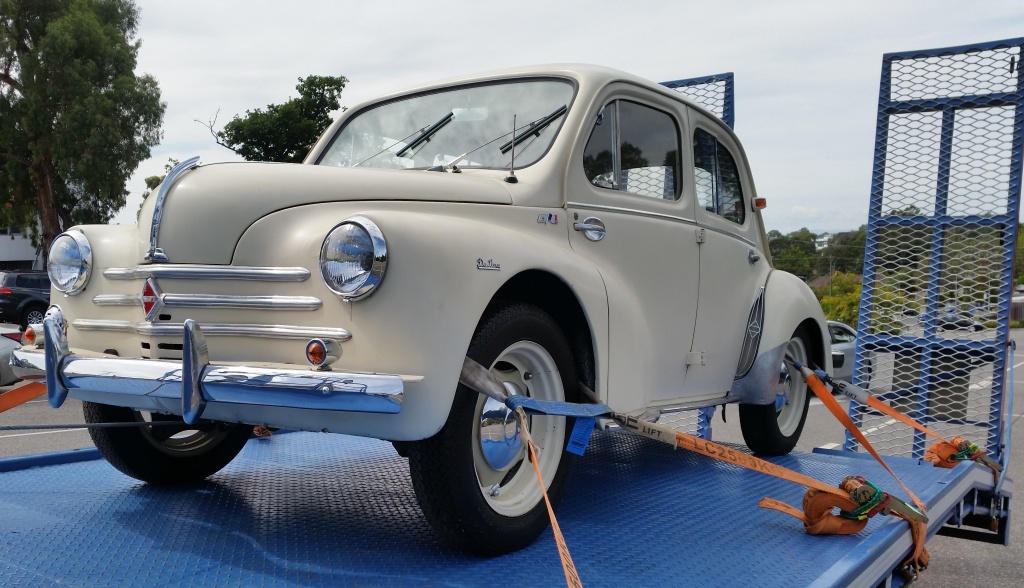
↑ Tied down
securely for the 200km trip to its new home.
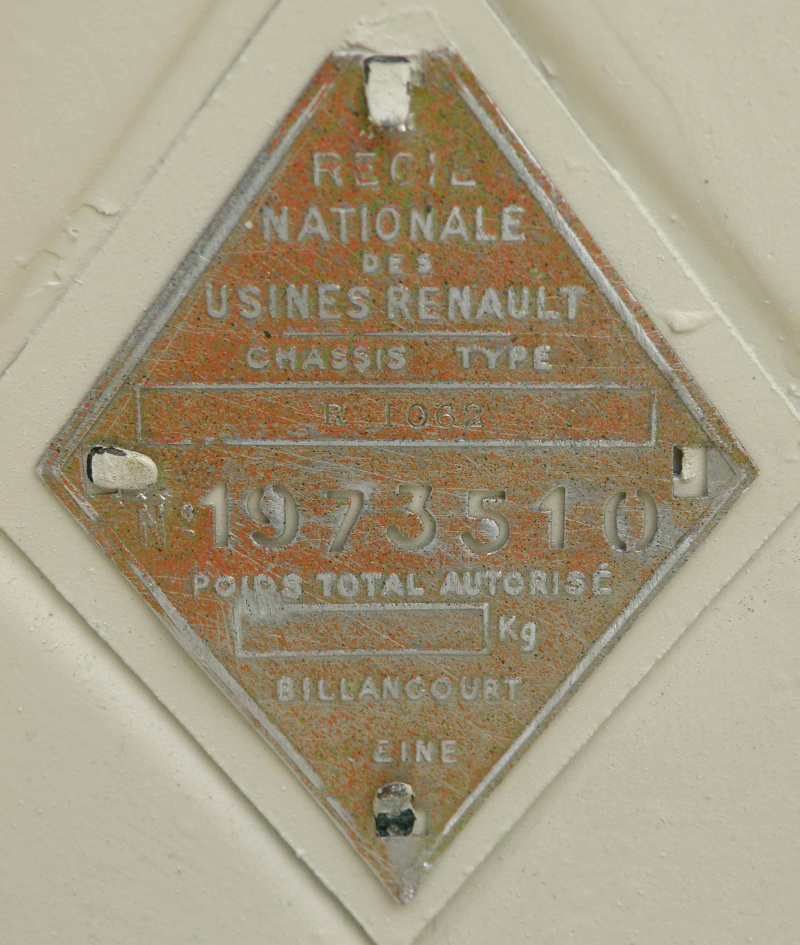
↑ The original plates show it was made in late 1953 (but 1954 model year)
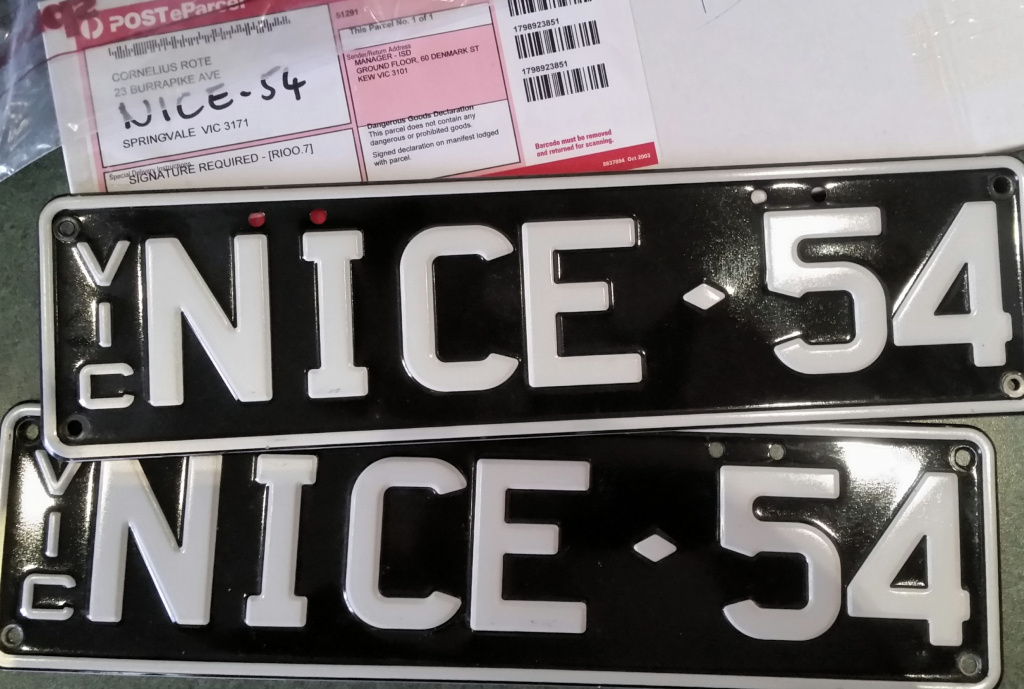
↑ I've had these personal plates for more than 20 years.They were
originally fitted to a 1954 VW Beetle Karmann Cabriolet which went to a
British Collector two decades ago. I think the 4CV is a NICE-54!
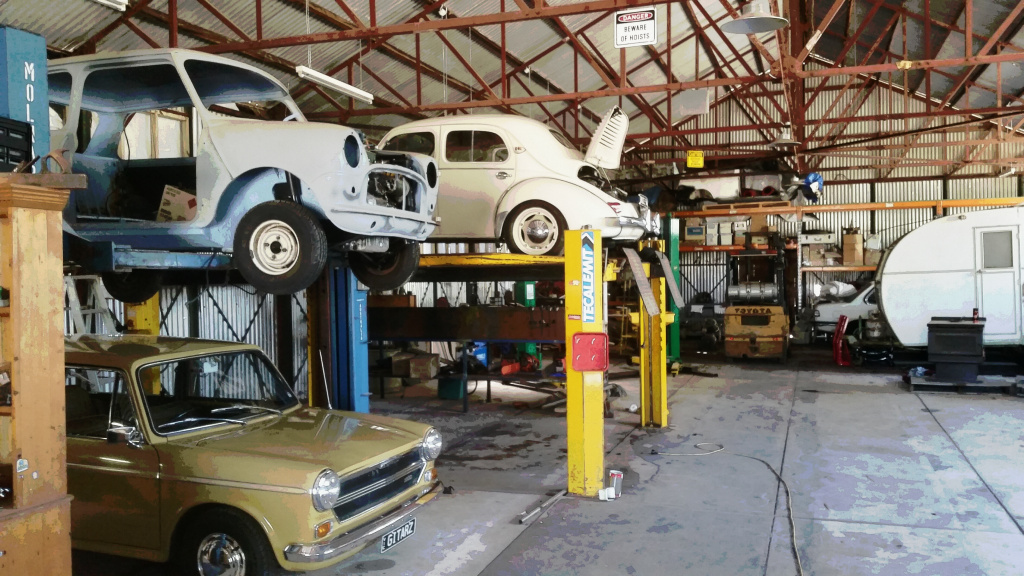
↑ Onto the hoist it goes! The moment of truth with any new purchase. The
news is generally good, with really solid and straight underneath, and no
nasty surprises.
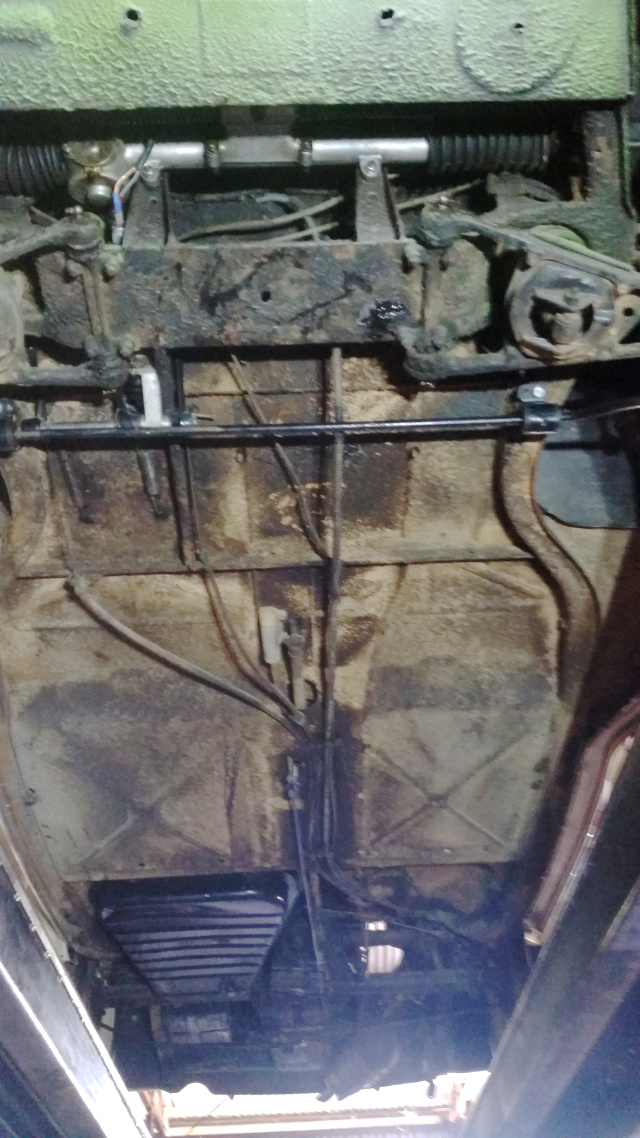
↑ This is the
underneath view without any preparatory cleaning at all. No nasty
surprises. The lurid lime green paint overspray is courtesy of a previous
owner, who painted the car lime green, with a black interior and red and
black spider wheels! (the things you can discover with judicious Internet
research...hopefully some photos of this period in the car's life will be
sent to me - it seems likely!)
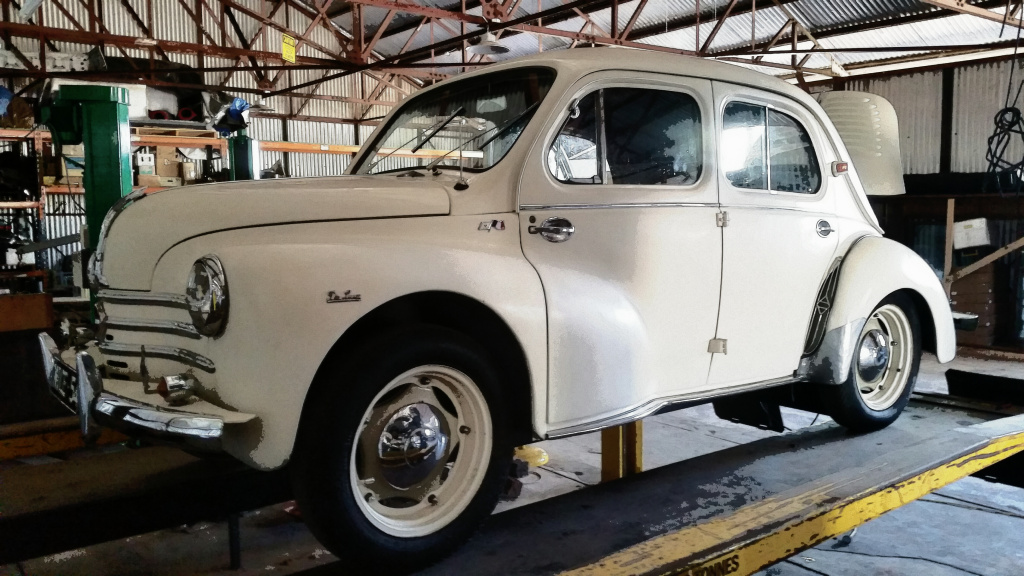
↑ It looks nice on the hoist! Just had to take a 2nd shot. Close
inspection shows I will need to unfortunately remove the paintwork done
recently, to properly address a few minor issues, and the get such details
as the seam between the headlight and the front wheel arch visible as was
originally the case. Overall, however, the body is in remarkable
condition. I can only assume it spent much of its early life in a very dry
part of Australia. I would love to find more about its history. The
positive aspect of removing the paint is that I can restore it in its
original colour, which was a nice light green (I found the original paint
under the front ventilation flap, which had escaped the various resprays
in the car's life - see below)
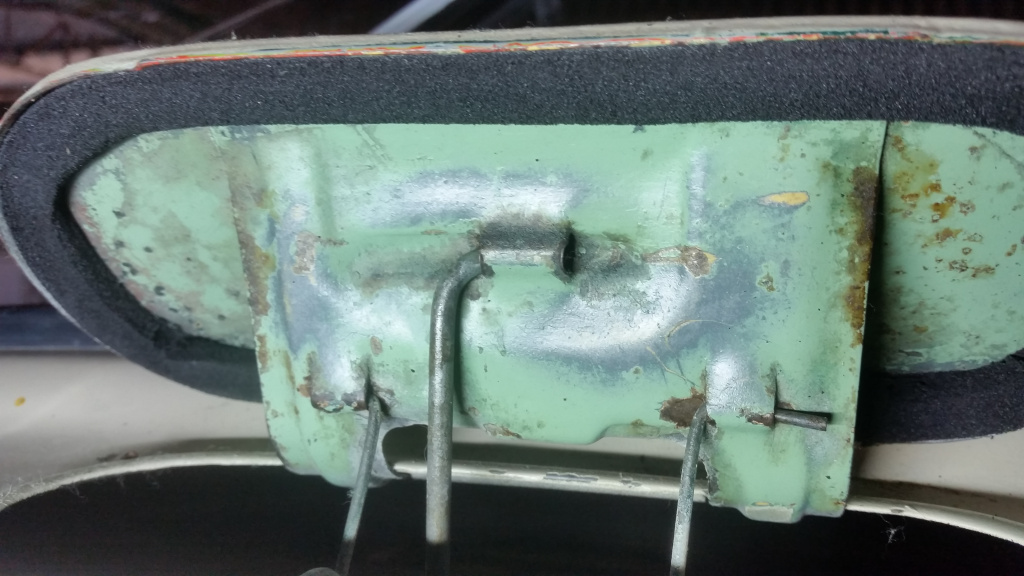
↑ The original 1953/4 paint. This will be reinstated.
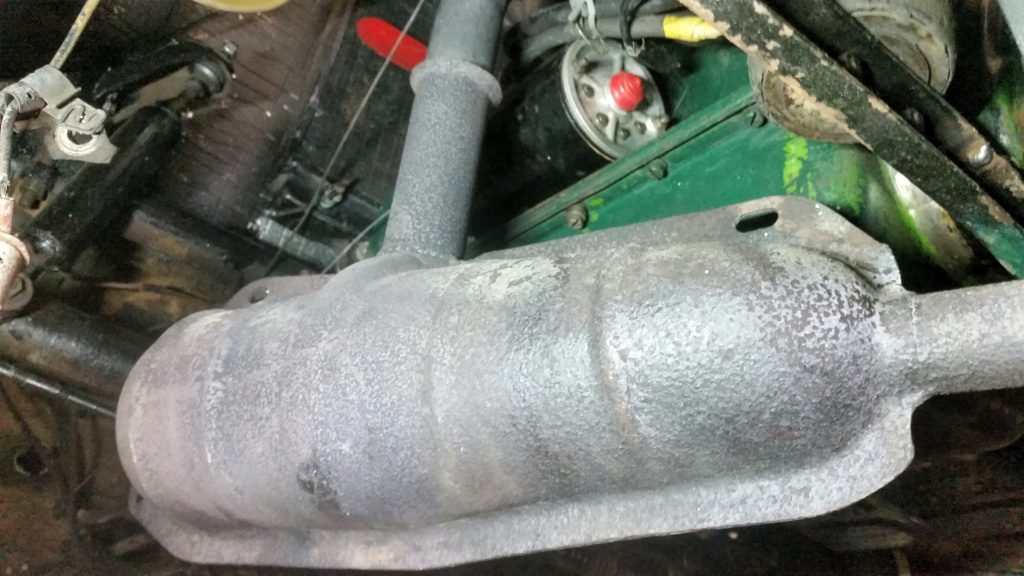
↑ This muffler was
slightly damaged when backing the car off the truck, as it was so
low-hanging. At first I was alarmed, but then realised it couldn't
possibly be the correct muffler, as it was so ridiculously mounted. Turns
out to be an R10 exhaust, so it'll go.

↑ The previous owner had had trouble with cold starting the car, and then
with it running very rich once started. I spent some time disassembling,
correctly assembling and attempting to tune this carburettor, before I
realised it was the wrong one. Like the muffler, from a later car
(Dauphine, I think). So, I'm on the hunt for a correct 22IAC carburettor,
and its correct manifold.
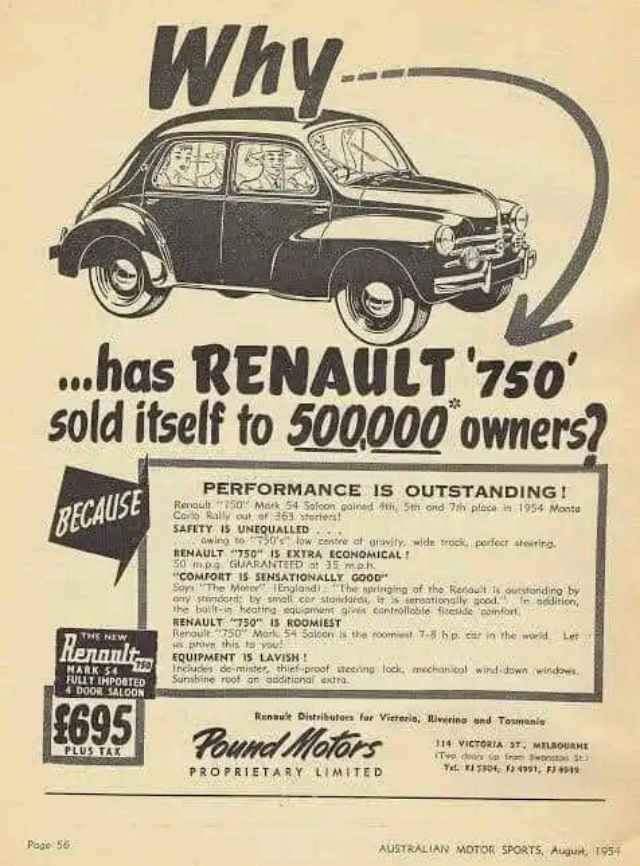
↑ The ad says it all!
Watch this page for developments!
